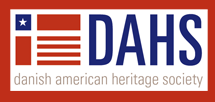Keywords
cultural identity, ethnic identity, holidays, assimilation
Abstract
In a conversation with a colleague several years ago, I was surprised to find out that we were both exactly one quarter Swedish—I through my paternal grandfather and he through his maternal grandfather. This was unexpected because based on his appearance, family traditions, and last name, I had never anticipated that we might share this common ancestral heritage. Whereas my family has tended to emphasize its connections to Swedish culture, his has focused on links to Japan. There are good reasons that account for the differences in our families’ respective cultural identification, but the variability of how we each see our own ethnicity underscores what ethnographers and folklorists have known for a very long time: there is nothing automatic or straightforward about the expression of ethnic identities. Being Swedish American, Japanese American, or anything else is far more than what can be measured in a DNA test or observed in hair or eye color. As such, the study of ethnicity is not the search for essences or origins, rather the performance of identity within the bounds of given cultural contexts. This might make it sound as if ethnic or cultural identity is completely arbitrary, but this is not the case. Political, economic, social, religious, and environmental factors are tremendously influential, although it is the complex interplay of all these factors that can make ethnicity very difficult to trace.
Recommended Citation
Oscarson, Christopher
(2017)
"Jennifer Eastman Att ebery. Pole Raising and Speech Making: Modalities of Swedish American Summer Celebration.,"
The Bridge: Vol. 40:
No.
2, Article 13.
Available at:
https://scholarsarchive.byu.edu/thebridge/vol40/iss2/13
Included in
European History Commons, European Languages and Societies Commons, Regional Sociology Commons


